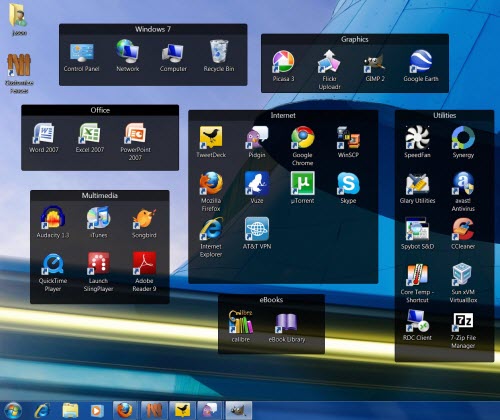


Toggling the Fences on and off with the Win+CTRL+Space key is slightly better, but not much so.įences, therefore, is somewhat like a digital maid. As a lefty, I mouse with my left hand, the same side as the Win key resides, which made it all a bit awkward. The appeal here is obvious: your desktop is simply a space upon which to store files, so accessing those files, and only those files, makes sense. In Fences, that functionality is supplemented by a second keyboard shortcut, Win+Space, which toggles your Fences - and the files you want to interact with - without banishing every window on your screen. (The Win+D shortcut is a much more efficient way of accomplishing the same task, but not everyone knows that keyboard shortcut, either.)
#STARDOCK FENCES FREE ALTERNATIVE WINDOWS#
When you do so, your windows disappear and you’ll see everything that’s on your desktop. It's not free, so if you're looking for a free alternative, you could try Sideslide or iTop Easy Desktop. No, the very right-hand edge - there’s just a tiny sliver of invisible screen real estate that triggers this function. There are more than 10 alternatives to Portals: Desktop Organization for Windows, Mac, Linux, Steam and Screenlets.

You may or may not know that Windows allows you to quickly reveal your desktop by navigating to the right-hand edge of the taskbar. There’s one other feature that Fences pulls off fairly well, capitalizing on Windows’ poor communication skills. Fences solves this by allowing you to click the title bar of each fence, which “rolls up” the fence, concealing its contents. The “problem,” of course, is that those Fences still shows those files - a problem for those users who prefer a clean desktop, anyway. That’s essentially what Fences is designed to do: Serve as an auto-filing system of sorts, where files and folders are automatically routed to the correct fence to clear up your desktop.


 0 kommentar(er)
0 kommentar(er)
